IR/INFO Conference
Proceedings 2017
List of articles contained in the IR/INFO 2017 Proceedings:
Corbett Lunsford
The Building Performance Workshop

Ph: 773.398.5288
Keynote Speaker
Abstract:
Corbett Lunsford is an infrared thermographer and subject matter expert on building performance and forensics. He is the co-host of the 2017 TV show ‘Home Diagnosis’ and Proof Is Possible US Tour, and the author of the book ‘Home Performance Diagnostics’. Corbett founded the Building Performance Workshop in 2008 to help homeowners prove they got what they paid for, and to help building professionals prove that they do better work than their competitors. He can be heard interviewing the cream of the construction industry on the Building Performance Podcast and seen demonstrating that Proof Is Possible with home performance testing in over 200 YouTube videos.
Since April 2016, Corbett has been on a 20 city US tour with his wife and daughter in a high performance tiny house on wheels called the #TinyLab. Their mission is simple: to revolutionize the home market by teaching consumers and contractors alike to use scientific testing to prove that work gets done to quality standards.
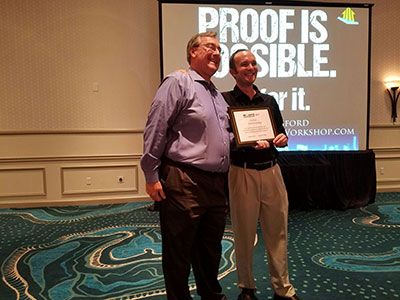
Allinson, John (Jack) N., BSc, AMS®
Level III Certified Infrared Thermographer
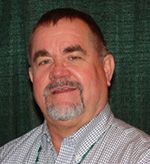
J.N. Allinson Associates, Inc.
222-2 University Blvd. North
Jacksonville, FL 32211
Ph: 904-721-2177
The FLIR ONE IOS Infrared Imaging Radiometer and Marine Surveying
Abstract:
In 2003 Jack started applying infrared thermal imaging to Marine Surveying using a FLIR model E2 imaging radiometer. While the imager measured temperature, it initially did not save images in a format that could be analyzed with post processing. Jack had the unit upgraded to save images in radiometric format. The imager was acceptable until Jack acquired a FLIR P65HS in 2006. The P65HS remains Jack’s go to imager. In addition to better sensitivity and resolution than the E2, the P65HS records radiometric images in a burst mode at up to 30 images per second.
In 2014 Jack acquired the “1st generation” FLIR ONE for IOS. The imager’s small form, technology, and attractive price point were impressive yet the sensitivity, resolution, and frame rate were not very useful for marine surveying. In 2015 Jack acquired the “2nd generation” FLIR ONE for IOS and has found it to be a useful adjunct to the FLIR P65HS. Join Jack as he reviews how he uses the “2nd generation” FLIR ONE for marine surveying.

Beauchemin, Oliver F.
Owner, Accolade Group of Vermont, LLC

PO Box 10
Waterville, VT 05492
Ph: 802-644-8362
Mobilegeddon
Abstract:
You know about Armageddon, right? No, not the 1998 movie; the 2016 event that has changed your business and is costing you money. It’s called Mobilegeddon and you’re living in the midst of it right now. There have been false profits leading you this way and that; but, mostly away from the way of the righteous. Now, the hour is at hand, the wheat is being separated not just from the chaff, nay verily, I say unto you, from the entire field. Come and hearken to my warning lest you are lost to the perils of Mobilegeddon.
Bethel, Noah CMRP
Vice President of Product Development
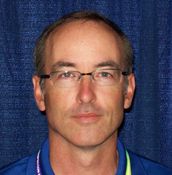
PdMA Corporation
5909-C Hampton Oaks Parkway
Tampa, FL 33610
Ph: 813-621-6463
Making Reliability Lean and Mean
Abstract:
If times get tough…the tough get going. If the recent decade has not presented you or your company with some tough economic times, then you are blessed and highly favored. For the rest of us faced with maintaining a high reliability standard to ensure a competitive bottom line for our company, the following information should be helpful in getting the most out of your electric maintenance budget.
This presentation will identify the three keys for basic application of technology to trend and troubleshoot your electric motors and teach standard communication protocols for identifying the root cause of electric motor faults.
Also covered are methods of dealing with reliability needs following the large reduction of personnel resources through retirement along with how to evaluate technologies and philosophies like test access panels, automation, and integration to maximize the efficiency of your onsite resources and provide secure easy access to offsite resources for analysis.
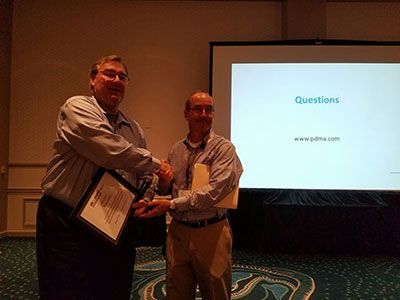
Brady, James
Level III Certified Infrared Thermographer

Brady Infrared Inspections, Inc.
935 Pine Castle Court
Stuart, FL 34996
Ph: 772-288-9884
Infrared and Visual Inspection of Overhead Distribution Circuits
Abstract:
For most power utility companies, infrared technology is part of their troubleshooting program to help identify compromised connection points and component problems. Independent of thermal patrols, visual inspections are routinely carried out to troubleshoot sources of power interruptions that commonly affect distribution circuits. Combining these inspections into one patrol allows a comprehensive evaluation of a circuit and makes better use of manpower by avoiding redundant tasks common to both inspections. This presentation highlights the results of several years of infrared and visual inspection of overhead distribution circuits and discusses common thermal signatures of faults, and non-thermal problems that are often the root cause of power interruptions.
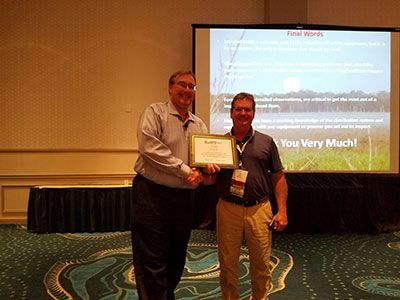
Scott Cawlfield
President
Logos Computer Solutions, Inc.
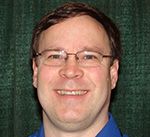
Seattle, WA
Ph: 206-217-0577
Fax: 206-217-0573
Lessons Learned in Automating Infrared Inspections
Abstract:
When Logos first started writing software to automate the infrared inspection process, we looked at how to make the inspection process and data gathering faster and simpler for the thermographer.
Next, we looked at the thermographers work product, the infrared report, and what the end customer would like to see. Many of the initial ideas we had were correct, but many of them were wrong.
I will list what features have been very successful and what have been flops. I can highlight from our perspective: “What are customers interested in”, “what sales and marketing points are important to emphasize”, and “IR competitive advantages”.
Hopefully, you can learn from our mistakes and improve your infrared business model in the process.
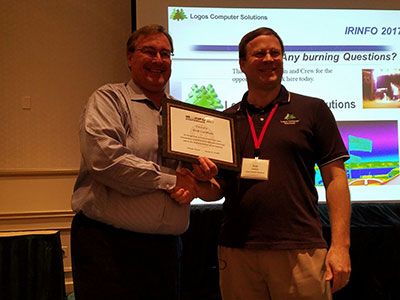
Jan K. Eklund
Eklund Infrared Inc.,
Sub. Eklund Innovation Inc.
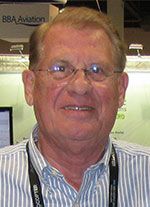
2985 Gordy Parkway NE
Marietta, GA 30066
Ph: 770-578-4435
Corona Cameras – Do We Need Them?
Abstract:
Corona is an electrical discharge brought on by the ionization of a fluid such as air surrounding an electrically charged conductor. Most often associated with high-voltage systems, corona can create radio interference and cause damage to electrical system components. In its advanced stages, corona appears as a bluish glow and is visible to the human eye in low light conditions; however, corona is often invisible in its early stages or under normal daylight conditions.
Seventeen years ago, the invention of a sharp 240 to 280 nanometer optical bandpass filter with extended stop band properties made it possible to manufacture a bi-spectral UVc/Visible 100% SolarBlind Corona Camera system for high voltage electrical corona detection. This presentation will discuss the theory and practical application of this technology for detecting corona within energized electrical systems.

Marie Getsug, PMP, CMRP, CRL
Program Manager, Asset Management Group
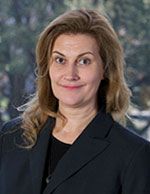
Jacobs Engineering Group, Inc.
Clarksville, MD 21029
Asset Management Requires a New Governance Structure: Creating a Holistic Framework with Design for Reliability (DfR)
Abstract:
Asset Management has introduced a few key concepts which require a shift from focusing on initial investment to optimizing the life-cycle cost. The basis for such decisions is rooted in a risk-based and science-based approach to understanding the requirements of the asset throughout its useful life. The risk-based approach drives prioritization and optimization; whereas, the science-based approach honors the Subject Matter Experts (SMEs) experience as well as seeking meaningful data to drive decisions. Both must be applied in the concept and design phases to be effective.
Shifting the Project Management Office (PMO) and the Capital Engineering Process from a mindset of initial cost, scope and schedule to a more holistic approach that considers the requirements and performance throughout an asset’s life, requires a shift in the governance structure. Stakeholders with any level of responsibility for these assets are being called upon to contribute their experience in the concept and design phases. This is core to Front End Planning (FEP) and Design for Reliability (DfR). Building a program to drive these changes requires a governance structure that supports, funds and allows time for the input of these stakeholders and captures their input via a continuous improvement cycle.
The ISO 55000 Asset Management Standards are based upon four fundamentals which support this shift by demonstrating how asset management is everyone’s responsibility.
This presentation focuses on how the PMO Governance Structure must be holistically based upon these fundamentals and supported by programs and tools such as Design for Reliability (DfR), Front End Planning (FEP) and Life-Cycle Costing (LCC). It is imperative to build a governance structure that supports a culture where the early input of all stakeholders is valued and applied. Just like safety and quality have grown to be everyone’s responsibility, so must asset management.
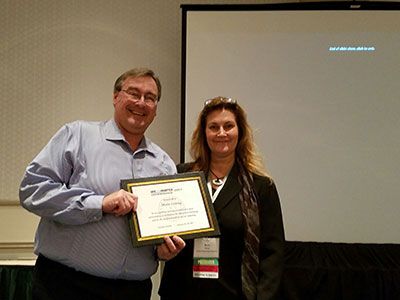
Peyton Griggers
GenesisSolutions, an ABS Group Company

100-B Danbury Road, Suite 105
Ridgefield, CT 06877
Ph: 203-431-0281
Utilizing Your CMMS To Drive Infrared PdM Activities
Abstract:
This presentation will discuss and demonstrate several steps necessary to set up a Computerized Maintenance Management System (CMMS) to monitor and drive infrared (Predictive Maintenance) PdM activities.
These steps are:
• Identify assets in scope for thermography inspections
• Capture asset information and build assets within CMMS application
• Develop asset and location hierarchy to facilitate route creation and execution
• Setup condition monitoring information for assets included in infrared inspections to trigger follow up work based on inspection results
• Develop metrics to measure performance / issue frequency based on inspection findings and follow up items
• Develop routes and route schedules in CMMS application
• Execute routes creating / triggering follow-up work orders as needed
• Analyze data and monitor KPI data on defined intervals
• Review and update frequencies and actions based on results and metrics data
Additionally, we will highlight aspects of the integration that downloads the infrared readings to the CMMS.

Marcus Halliday
Distribution Director
CorDEX Instruments Limited
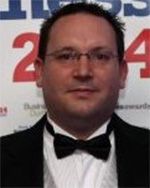
Unit 1 Owens Road
Skippers Lane Industrial Estate
Middlesbrough, Teesside, TS6 6HE United Kingdom
Ph: 011-44-01642-454373
Jim Disser
District Sales Manager
Diamond Technical Surveys, LLC
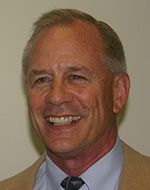
23221 Aldine Westfield Road,
Suite 710
Spring, Texas 77373
Ph: 281-379-6450
Regulations Governing the Use of Hand-held Instruments within the Oil, Gas, and Petrochemical Industries
Abstract:
Regular inspections within the Oil, Gas, and Petrochemical industry are mandatory under government legislation. This legislation puts the onus on the plant operators to ensure continued safe operation of their facilities, a major part of which is to ensure equipment is operating within specified safe temperature limits required to prevent explosions. For example, since the early nineties these industries have gradually introduced the use of infrared thermography as a useful method of NDT for aiding their preventive maintenance programs.
As more emphasis is placed on safety within hazardous locations, there will be a greater increase in the number of personnel carrying out inspection/maintenance duties without a full understanding of the regulations governing the use of non-certified equipment in hazardous locations.
This paper will discuss the regulations and guidelines relating to the use of hand-held instruments within potentially hazardous (explosive) working environments. Specifically, the author will discuss the importance of adhering to regulations and how they affect the use of hand-held instruments within potentially explosive atmospheres. By providing this information, it will enable engineers and inspectors to use their technology safely and ultimately improve the reliability and productivity of their facility.
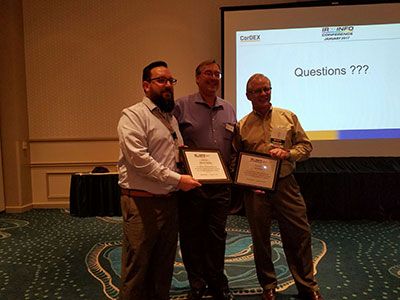
Hixson, Ben T.
Hixson Consultants, Inc.
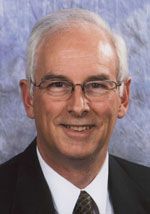
947 First Avenue West
Alabaster, AL 35007
Ph: 205-663-2220 / 205-664-5115
Vapor Retarder, Mass, and Hygroscopic Properties Affecting Evaporation and Infrared Moisture Detection
Abstract:
Absent hygroscopic properties to retain considerable moisture and create mass, vapor retarders, and vapor barriers dramatically limit evaporation which in turn can make concealed moisture detection much more challenging. Stated another way, when encased in a non-permeable vapor retarder or vapor barrier that negates evaporation the retained moisture content and mass of a non-porous material contribute far more to concealed moisture detection via infrared than infrared detection as a result of evaporating moisture.
The purpose of this brief presentation is to share thermograms of various porous and nonporous materials to indicate differing contributions vapor barriers, mass, and the hygroscopic properties have regarding infrared detection capabilities of concealed moisture. The thermograms indicate variances between permeability, evaporation, hygroscopic properties, and porosity that affect infrared detection of possible and probable concealed moisture.
It is important for the knowledgeable thermographer to recognize these contributions when attempting to detect possible and probable concealed moisture.
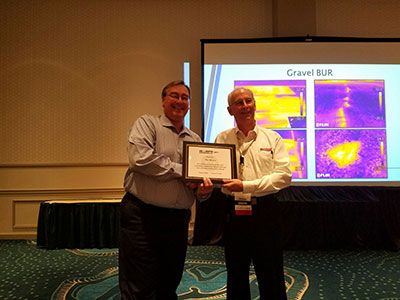
James, Sonny
IACT Certified Clinical Thermographic Technician
Managing Director
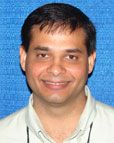
Thermal Diagnostics Limited – Medical Division
15 Robertson Street, Les Efforts East
San Fernando, Trinidad & Tobago, West Indies
Ph: 868-653-9343 / 868-657-6572
Medical Thermography: A Guide to Establishing Your Own Medical Imaging Center
Abstract:
Medical Thermography has been around for several decades with varying degrees of positive and negative promotion, research, and support. Current trends show that there is a slow but steady growth and awareness happening within the conventional medical industry. In order for this important imaging modality to get broader recognition and acceptance throughout the conventional medical industry, more reputable imaging centers need be established.
This paper will discuss what is needed for anyone wishing to establish a reputable medical thermography imaging center that will benefit both patients and doctors. From office space to equipment requirements to training and certification, it will also touch on sales strategies and the expected return on investment for a start-up imaging center.
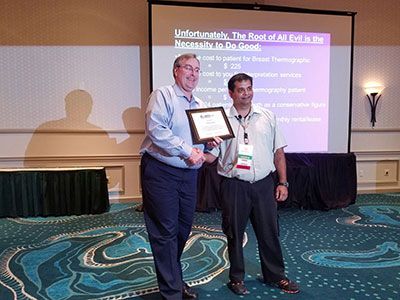
Kochanek, Ed
Eastern Region Sales Director
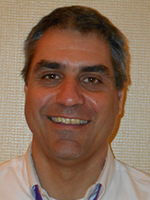
FLIR Systems, Inc.
22 Overlook Drive
Woolwich, NJ 08085
866-379-4022
Gas Detection Using a Thermal Imaging Camera
Abstract:
Infrared cameras have a long history in the industrial world, starting with basic electrical applications. However, IR camera manufacturers can get creative and use filters that allow specific IR wavebands through allowing us to see only a small subset of the electromagnetic spectrum. Within these subsets certain objects such as gases go from transparent to opaque. This allows for the design of an infrared camera that can see certain types of gases. Within the last 10 years there has been tremendous growth and desire by industries to see and detect these gas leaks. This paper and presentation will go through how gas detection cameras work and the industries that utilize them.

Messer, Adrian
Manager of US Operations
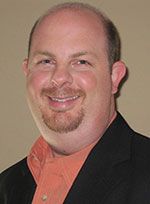
UE Systems, Inc.
864-224-4517
914-282-3504
Steam Trap Inspection Basics Using Ultrasound
Abstract:
High energy prices and global competition dictate a need to reduce energy waste and improve system efficiencies whenever possible. Steam, aside from being one of the most costly utilities in plants, is an essential component to product quality in many processing industries. A major contributor to waste and inefficiency is leaks: both to atmosphere and through valves and steam traps.
Ultrasound technology is used by maintenance and reliability professionals around the world to identify leaks in steam traps and valves. Factors such as organization, planning, technology implementation, inspection methods, test procedures, recording, and reporting of results must all be considered. This presentation will discuss the principles and practices of an effective ultrasound steam system inspection, and how to successfully perform an ultrasound steam trap survey.

G. Raymond Peacock
Temperatures.com, Inc.

Southampton, PA 18966
Ph: 215-436-9730
Temperatures: Measure Thrice Before Reporting Once
Abstract:
A measurement of any kind has error. Carpenters know this well and they often measure twice before cutting once. Common tape measures have resolutions down to 1/16th of an inch, but errors of as much as 1/2″ are not uncommon. The best measurement is a statistical assessment of the result of repeated measurements. Measurements always have accompanying uncertainties that can be quantified and reported by measuring more than once.
This paper explains terminology and important statistics to help understand the basics of measurements, with an emphasis on infrared temperature, and the several key influences Nature and Man have on the process of dealing with them. If you have read the first modern standard on non-contact temperature sensor (radiation thermometer) measurement, ASTM E1256-15, you learned that even in a calibration lab it recommends the average of at least three measurements of blackbody source temperature in verifying an infrared thermometer’s calibration. Thus, measure thrice, report once is a more reliable approach to getting the best practical result.
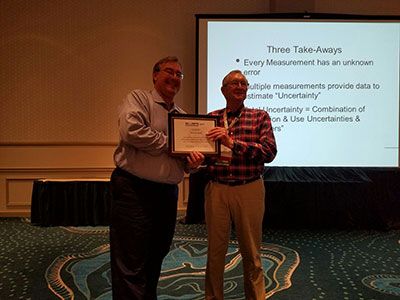
David Ritter
President
Ritter Safety & Facility Support
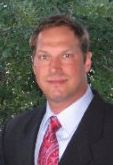
11628 Old Ballas Road, Suite 212
Creve Coeur, MO 63141
Ph: 314-579-9668
Host Employer and Contract Employer Responsibilities for Arc Flash and Electrical Safety
Abstract:
Whether you’re the Host Employer hiring a contractor to perform Predictive and Preventive Maintenance Services or you’re the Contractor performing these services, it is critical that you know who is responsible for what in terms of Arc Flash and Electrical Safety. Host Employers must know the requirements to help them identify whether or not a Contractor understands and is following safe electrical work practices.
Host Employers must also know their role and responsibilities when dealing with an Outside Contractor. We will share ideas on how to effectively manage Electrical Safety Requirements with your Contractors.
Since our clients are both Host Employers and Contract Employers we are familiar with the challenges faced by each party. As a Contractor, it’s critical that you have a clear understanding of your responsibilities and that you follow the requirements of NFPA 70E each and every time you service your client. You do not want to learn about the details of these requirements from your customer. Instead, be a leader in Electrical Safety. Knowing and following these requirements is not only the right thing to do, it’s good business. In this presentation, we’ll review the requirements of NFPA 70E and give you strategies on how to put them into practice. We’ll also discuss how to use these requirements to grow and protect your business.
Host Employers and Contract Employers must rely on one another to ensure maximum safety and efficiency. This presentation will help them set, and meet, proper expectations when dealing with each other.
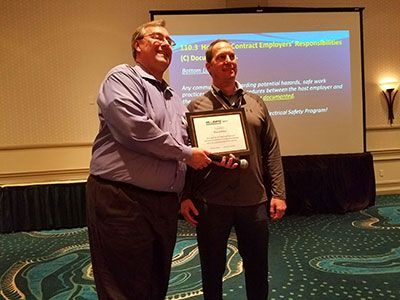
Roher, Tim
CMRP Founder & President
Exiscan Electrical Safety Products
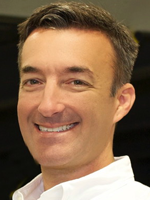
1645 Lyell Avenue
Rochester, NY 14606
Ph: 585-366-0333
NFPA 70E / CSA Z462: Prepare Now for Revision Changes
Abstract:
NFPA 70E and CSA Z462 are arguably the most influential standards for safe electrical work practices. The next revisions of NFPA 70E and CSA Z462 are due for release in the summer of 2017.
Although the standards are not technically “laws,” the best practices detailed within the standards are used by the regulatory bodies of the US and Canada, as well as other countries, and are widely considered to be de-facto standards for safe electrical-work practices.
This presentation will answer several important questions about the upcoming revisions including the most significant changes coming in the upcoming revision and the justifications for those changes. Also covered are common misconceptions regarding the standards along with what companies can do to prepare for the coming changes.
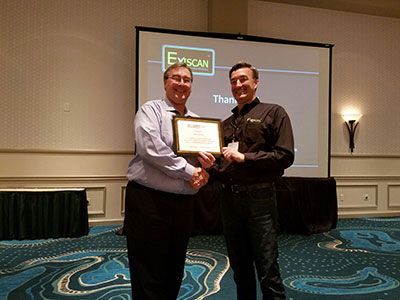
Michael R. Sharlon
President
Level III Certified Infrared Thermographer
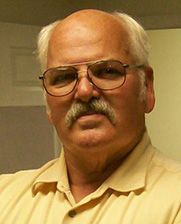
Thermasearch, Inc.
43 High Point Drive
Mayflower, AR 72106
Ph: 501-514-0953
The Use of Thermal Imaging as a Diagnostic Tool for Hydraulic Systems
Abstract:
Hydraulic systems are an integral part of many mobile and fixed machines. Because hydraulic components generate heat during normal operation, they are excellent subjects for thermal imaging. Quite often, failures in hydraulic systems are accompanied by a change in operating temperature. When hydraulic components are visually accessible, thermal imaging and non-contact thermometry can provide valuable data for system diagnostics. This paper will discuss the theory and operation of hydraulic systems, common system failures, and the proper application of thermal imaging for hydraulic system diagnostics.
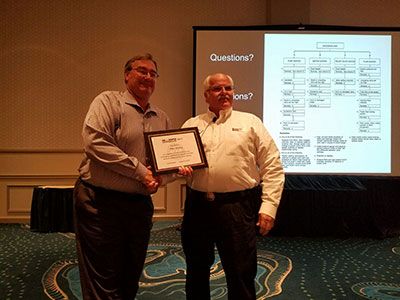
Stockton, Greg
President
Stockton Infrared Thermographic Services, Inc.
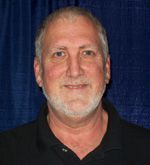
8472 Adams Farm Road
Randleman, NC 27317
Ph: 800-248-SCAN (7226)
Thermal Infrared Imaging of Flat Building Roofs
Abstract:
Many uses of infrared thermography for buildings and infrastructures have been well-documented over the past forty years. Thermal infrared surveying and associated testing can be used to find design flaws, construction defects and in-situ performance issues. There are many ways to accomplish building and infrastructure infrared surveys depending on the ambient conditions and the use of building HVAC controls. One very effective application of infrared thermography is surveying flat and low-sloped roofs to find and document the presence and location of wet roofing materials.
However, roof moisture surveying remains one of the most difficult for thermographers to understand because there are so many different types of roofs, waterproofing, roof substrates, roof insulation and roof decks. Together with weather effects and the thermodynamic considerations of the various combinations of roof building materials, it remains an often misunderstood application.
This presentation covers the four vantage points from which a thermographer can survey a building roof; under-roof, on-roof, elevated and aerial. All have their advantages and disadvantages. Also discussed are other techniques of NDT for finding moisture in roofs, and the methodologies, advantages and disadvantages of each type of roof moisture survey technique.
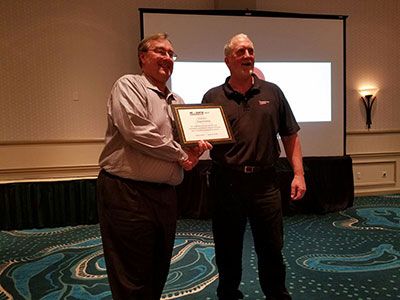
Larry D. Stratton
President
Level III Certified Infrared Thermographer
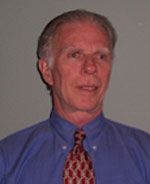
Cascade Thermal Imaging, Inc.
PO Box 2131
Redmond, WA 98073
Ph: 425-861-3887
How to Dollarize the Value of Your Business
Abstract:
Price is often what customers use to compare products and/or services. However, if the true goal is to get the lowest cost, then focusing on price is myopic.
We will discuss the necessity to Enhance or “Dollarize” the value of your organization and your service offerings and the importance of instructive, informative, and compelling discussions with your customers and potential customers relative to the value of what your service offerings are really worth to them.
We will cover the importance of how to prepare and present the extraordinary value and benefits you provide and in the process win “Customers for Life” – “Never Get Reduced to Fighting a Price Battle” – “And Become a Trusted Professional Problem Solving Resource for Your Customers”. The end result of which is the enhancement of profitability for your customers and your organization.
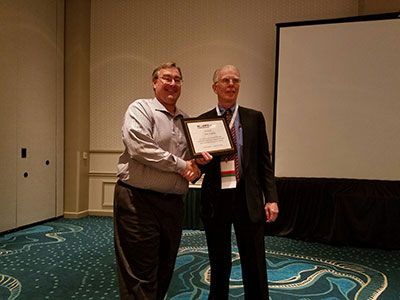
Swirnow, Wayne
President
Level III Certified Infrared Thermographer
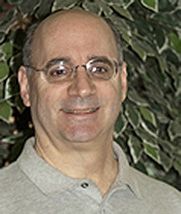
Infrared Imaging Services, LLC
PO Box 221
New City, NY 10956
845-641-5482
Emissivity Explained
Abstract:
Emissivity is a term we use in thermography to describe the rate that a material’s surface can transfer electromagnetic energy via radiation compared to a perfect black body at the same temperature. Thermographers are well aware of emissivity, its relationship to reflectivity and how it can influence what the thermal imager sees both qualitatively and quantitatively. The observed effects of emittance and reflectance shape our interpretation of the thermogram. Emissivity and reflectivity levels can influence what we say in our thermographic reporting and the decision to interpret a thermogram as an “exception” or not. This paper will explain the “causes” of emissivity and reflectivity in materials as it relates to the transfer of radiated electromagnetic energy in the infrared spectrum.
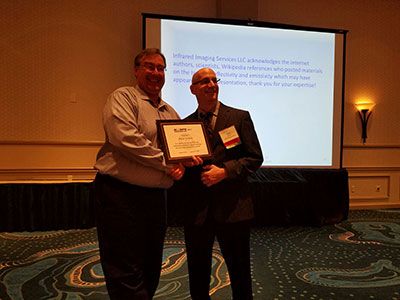
David Weisman
Level III Certified Infrared Thermographer
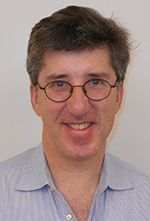
J-D-Eye LLC
150 West End Avenue UL 2
Somerville, NJ 08876
Ph: 973-364-8065
UAV Applications for Thermographers: Huge Market Potential !
Abstract:
Strap your thermal imaging camera on the drone you got for Christmas and you are in the aerial thermal imaging business! If only it were that simple.
There are many obstacles to starting a UAV-based business. Challenges include, but are not limited to: lack of public awareness, equipment limitations, and the government’s attempt to regulate an emerging technology that is not fully mature. Despite these challenges, the market potential for existing and new ideas that combine thermal imaging and UAVs is endless.
This presentation will introduce a number of areas where thermography and UAVs already intersect. I will then share my experience starting the UAV-based thermal inspection division of our business which is focused on the solar energy industry. Examples of solar module anomalies will be presented along with additional comments about the details of delivering a comprehensive field inspection which end users would find valuable.
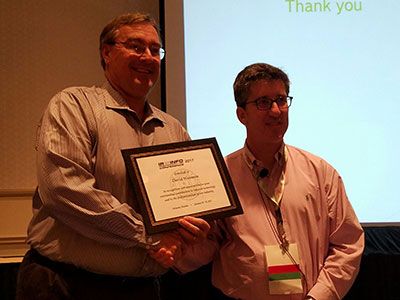
Who Should Attend
- Thermographers
- Process Control Supervisors
- Maintenance Managers
- Loss Control Specialists
- Reliability Engineers
- P/PM and NDT Personnel
- Manufacturers
- Quality Assurance Inspectors
- Home and Building Inspectors
How You Will Benefit
- Education
- Learn New Technology
- Networking
- See Latest Developments
- Share Ideas
- Discover New Applications & Techniques


